Published 01/08/2023
Greek art draws its roots from the civilizations of the Aegean world, formerly known mainly through the Homeric epics, oral narratives recorded in writing around 750 BC.
View our selection of Ancient Greek Art.
The artistic beginnings of Ancient Greece reach far back in time. From stone figurines from the Cyclades in the Neolithic period, to the refined frescoes and precious arts of the palace of Knossos in the Minoan civilization (3500 - 1450 BC), and the powerful architecture of the Cyclopean walls from the Mycenaean period (1750 - 1050 BC), these mark the earliest milestones of this rich art.
Despite a diversity of cultures, the Greek world, organized into colonies and then city-states throughout the Mediterranean basin, is connected by a common artistic language, a shared koine, that evolves through the ages and regions. Four major periods of Greek art are distinguished: the geometric, archaic, classical, and Hellenistic periods.
The Geometric Period: The Essence of Harmony
The Geometric Period (1050 - 680 BC) represents an initial phase of assimilation, primarily influenced by the East. It is a period renowned for its ceramics but also marked by the adoption of the Phoenician alphabet, the development of bronze work and goldsmithing, as well as the emergence of an ornamental and animal repertoire. Above all, the geometric style introduces two fundamental values of Greek art: symmetry and harmony of proportions.
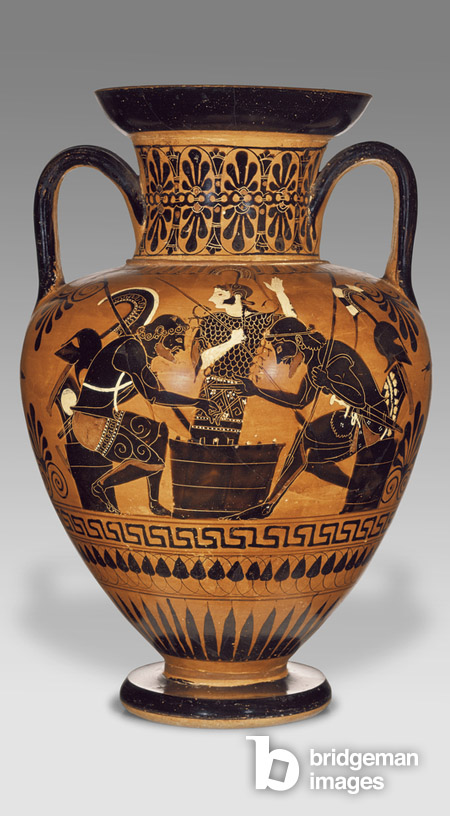
The Archaic Period: The Codification of the Human Figure
It is during the Archaic Period (680 - 483 BC) that artistic forms will profoundly influence Greek art. This period is marked by the codification of representing the human figure, centered around the famous model couple of the Kouros (nude male) and the Koré (clothed female).
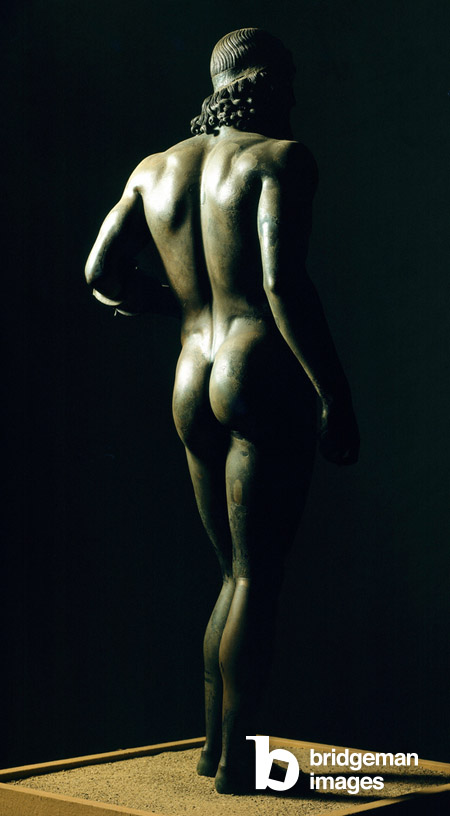
/ Luisa Ricciarini / Bridgeman Images
From the 8th century BC onwards, sanctuaries become the exclusive focus of art. Profoundly sacred, Greek art is entirely dedicated to its religious function. Architects, sculptors, and painters constantly work to contribute to the evolution of an ideal society, creating temples, pediments, porticos, and imposing monuments in the likeness of the gods they worship. Constrained by strict rules governing the iconography and function of the artworks, artisans demonstrate extraordinary ingenuity to constantly renew forms and improve techniques. They become aware of their creative act, and many sign their productions, thus gaining a respected status in society (artisans and bronze workers are under the divine protection of Athena and Hephaestus).
The Classical Period: The Apex of Greek Civilization
The Classical Period (483 - 338 BC) is marked by illustrious names such as Phidias, Polykleitos, and Praxiteles. It was a true golden age for Greek civilization, characterized by the hegemony of Athens and an extraordinary artistic flourishing. Under Pericles, significant works are undertaken, including the reconstruction of the Acropolis, which was plundered by the Persians in 480 BC.
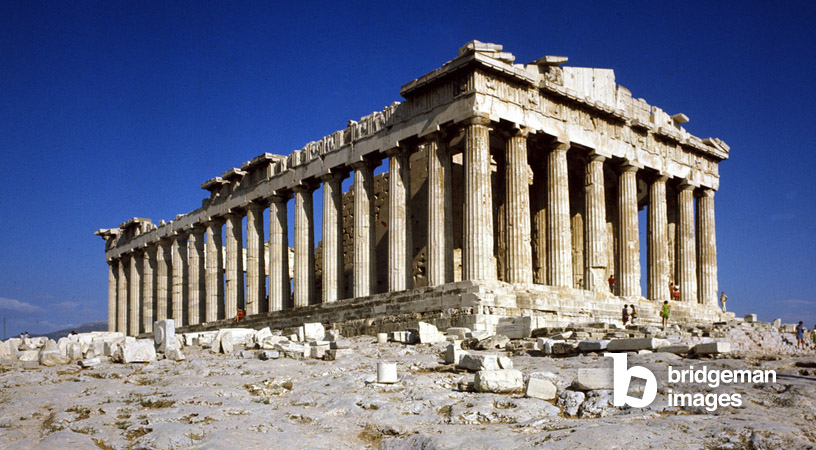
Two artistic trends develop in parallel. On one hand, the pursuit of perfect harmony leads to the canon of Polykleitos, defining the ideal proportions of the human body, in accordance with the subjects represented: gods, heroes, and athletes. On the other hand, a taste for illusion and the confrontation between representation and reality is expressed in a deep practice of imitation (mimesis). The foundations of the debate between idealism and realism are thus laid, while the style of sculpture evolves towards increasing mannerism, characterized by technical virtuosity highlighting the unprecedented sensuality of the bodies.
The Hellenistic Period: The Expression of Emotion
The Hellenistic Period (338 - 31 BC) continues on this path and develops a particularly expressive art. The taste for movement and the attention given to emotions are distinctive features of this period. In parallel, the Greek world undergoes profound economic and political changes: the crisis of the city-states leads to the emergence of new monarchies, from the reign of Alexander the Great to the kingdoms of the Attalids in Pergamon, the Seleucids in Antioch, and the Ptolemies in Alexandria. These transformations secularize art by giving it new functions, including decorating palaces with painting and mosaics and celebrating rulers through the art of portraiture.
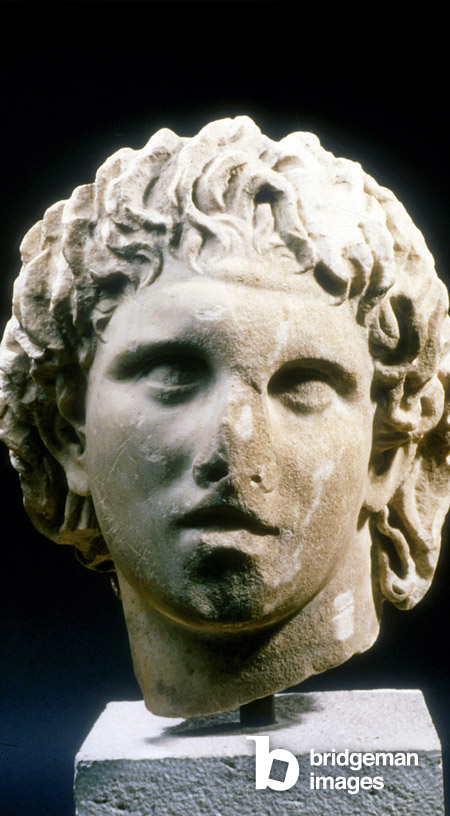
/ Universal History Archive/UIG / Bridgeman Images
Beyond the Decline, the Universal Heritage
In 31 BC, the Battle of Actium marked the decline of the Greek world and heralded the political and economic supremacy of Rome. However, beyond the civilization that gave it birth, Greek art has become an inexhaustible source of inspiration for artists. From its immediate adoption by the Romans to the numerous returns to classicism that have shaped the history of art, including the Italian Renaissance, the repertoire of forms from ancient Greece has established itself as a universal reference in Western art.
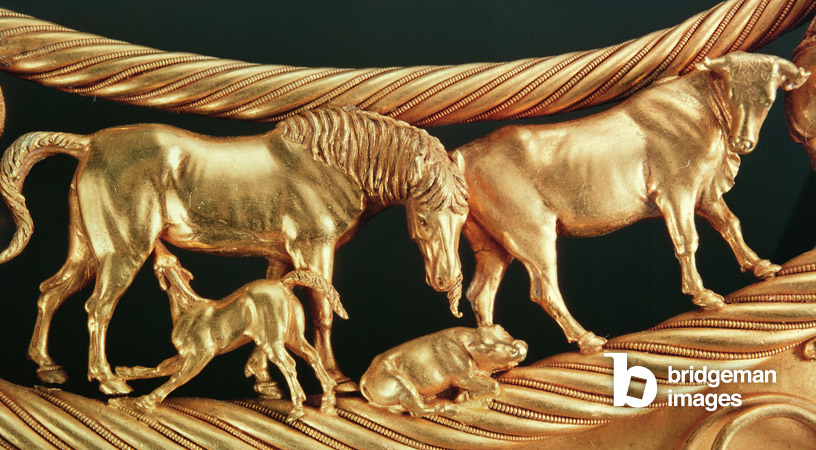
View our selection of Ancient Greek Art.
Get in touch with our team; we are always happy to assist you in your searches, with no obligation or additional cost.


